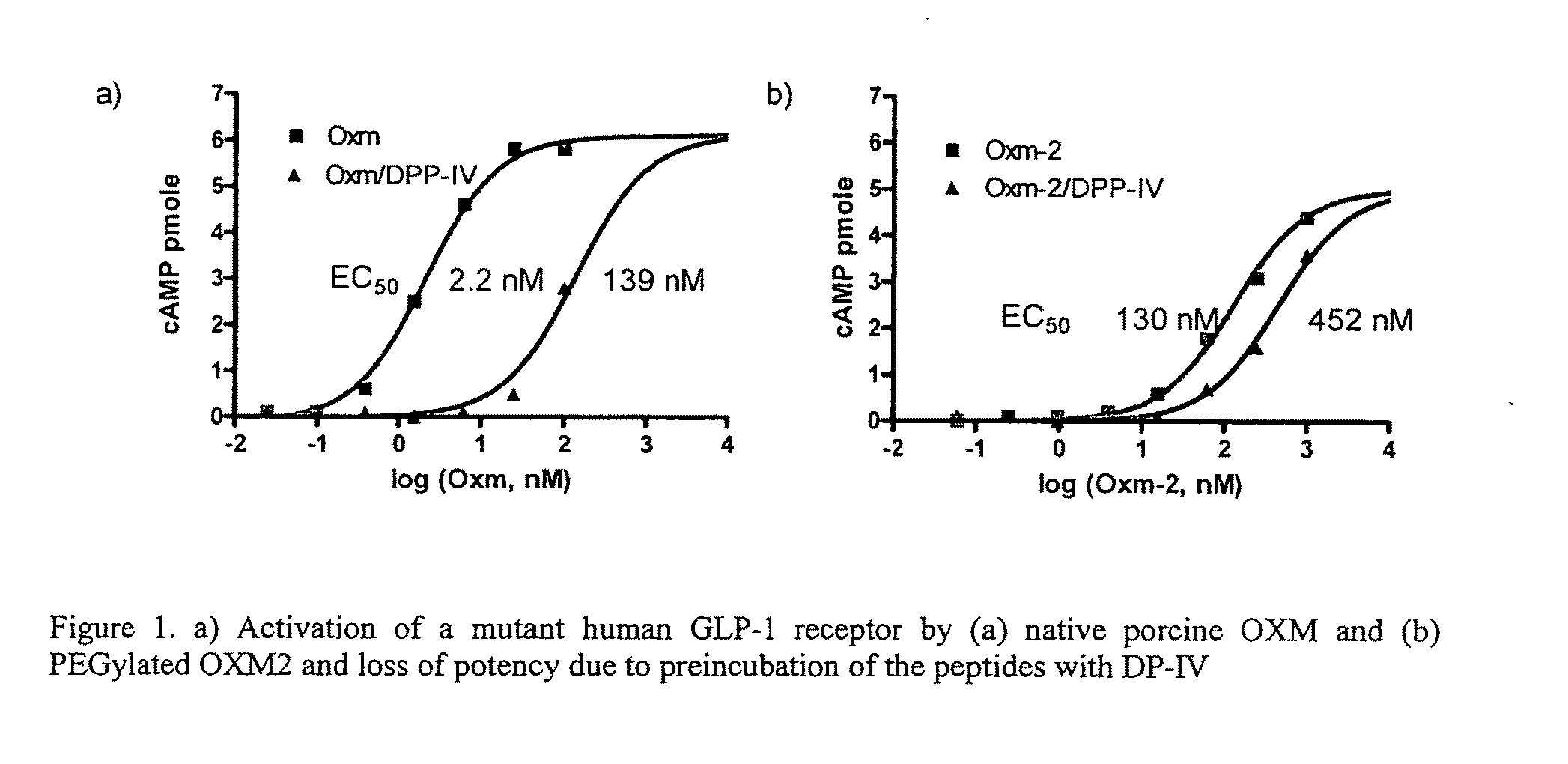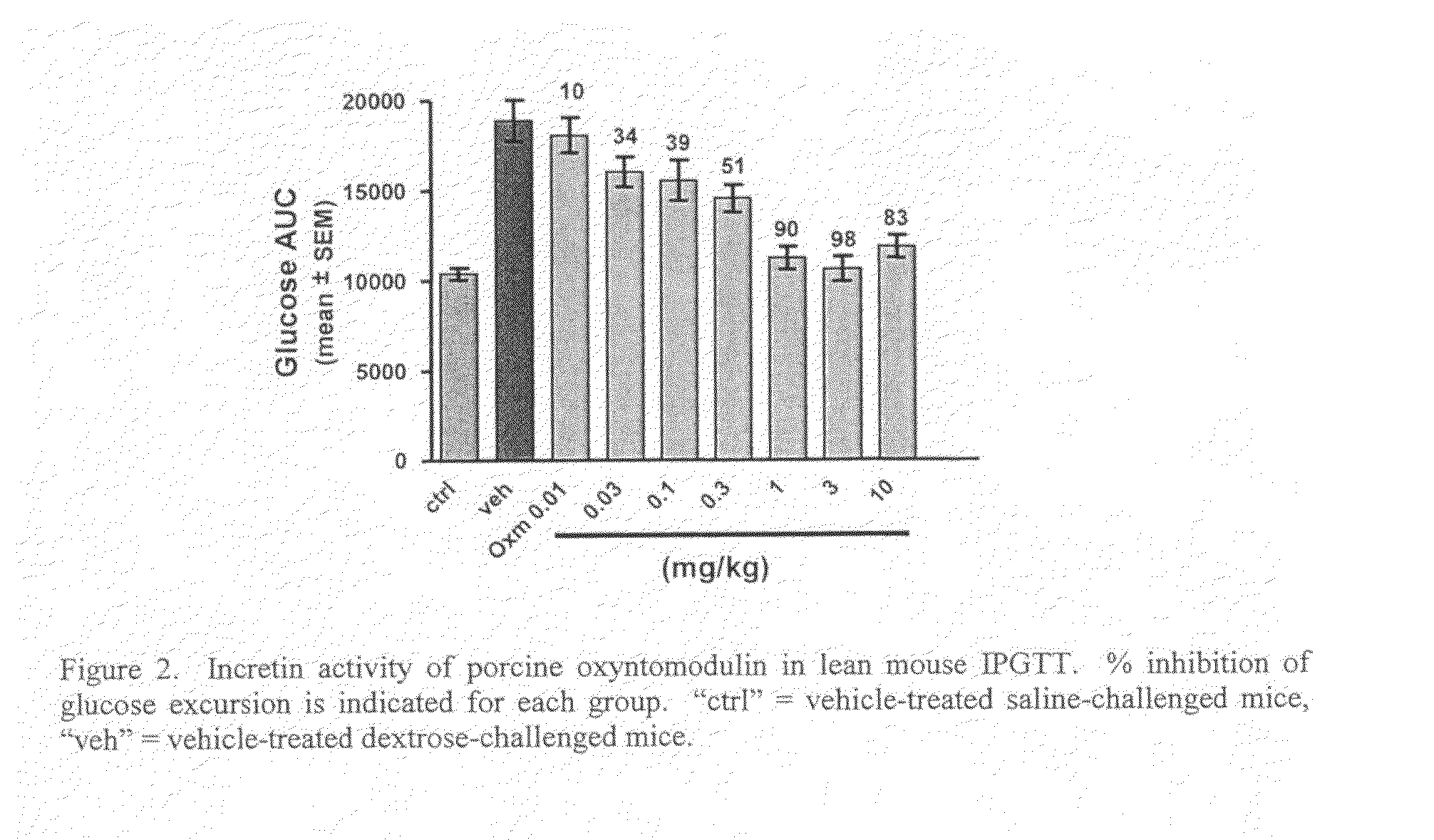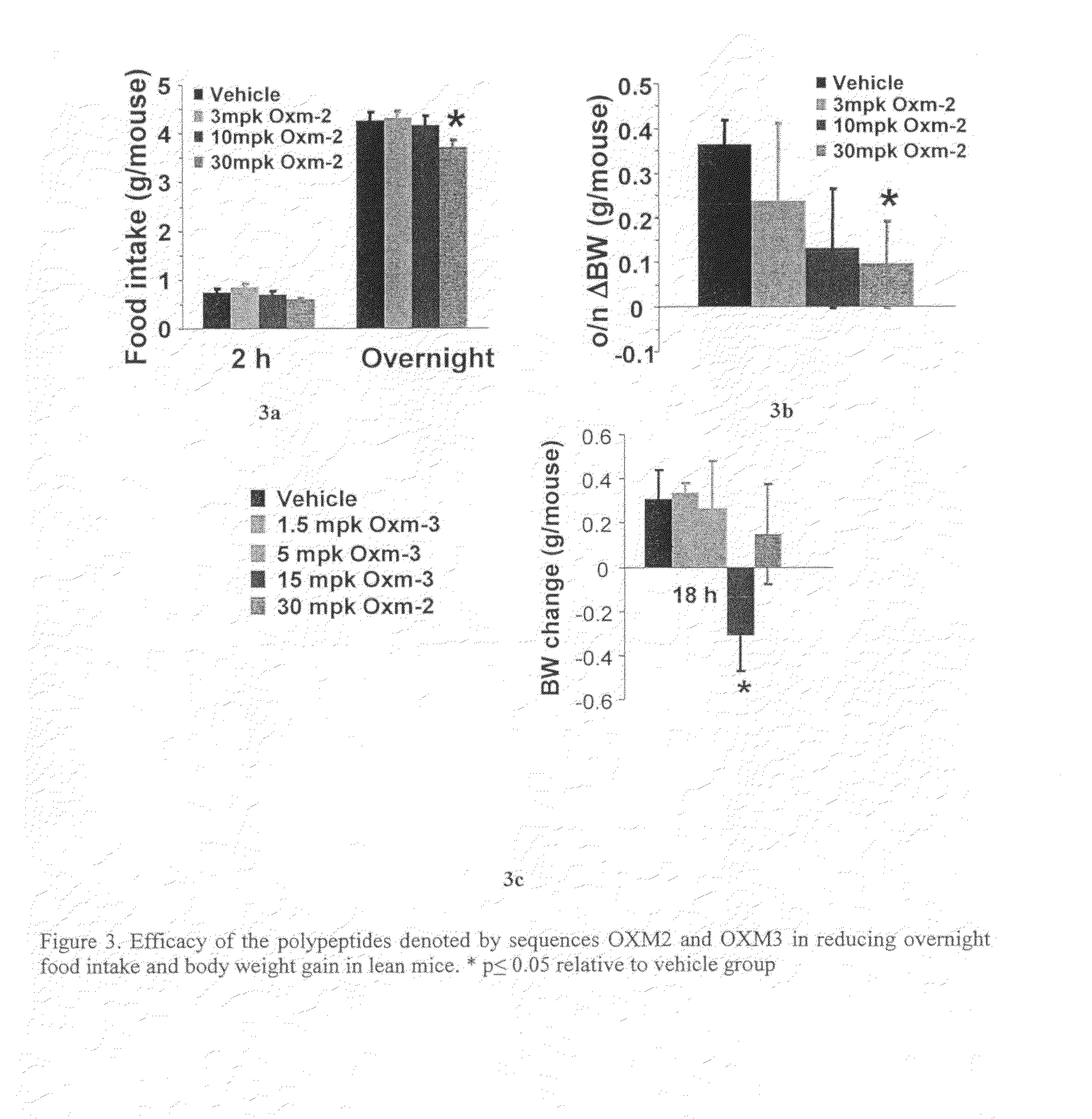Oxyntomodulin Derivatives
- Summary
- Abstract
- Description
- Claims
- Application Information
AI Technical Summary
Benefits of technology
Problems solved by technology
Method used
Image
Examples
example 1
Synthesis of Oxyntomodulin (OXM) Analogs
[0151]The peptide OXM analogs (see Table 1) were synthesized by solid phase using Fmoc / tBu chemistry on a peptide multisynthesizer APEX 396 (Advanced Chemtech) using a 40-well reaction block. Each peptide was synthesized in a single well. For peptide amides 0.1 g of a resin Fmoc-Linker AM-Champion, 1% cross-linked (Biosearch Technologies, Inc.) and a PEG-PS based resin derivatized with a modified Rink linker p-[(R,S)-α-[9H-Fluoren-9-yl-methoxyformamido]-2,4-dimethoxybenzyl]-phenoxyacetic acid (Rink, H., 1987, Tetrahedron Lett. 28:3787-3789; Bernatowicz, M. S. et al., 1989, Tetrahedron Lett. 30:4645-4667) was used. For peptide acids, 0.1 g of Champion resin, 1% cross-linked (Biosearch Technologies, Inc.) was used, which was previously derivatized with a hydroxymethylphenoxymethyl handle. All the amino acids were dissolved at a 0.5 M concentration in a solution of 0.5M HOBt (Hydroxybenzotriazole) in DMF. The acylation reactions were performed fo...
example 2
PEGylation of Oxyntomodulin (OXM) Analogs
[0164]PEGylation reactions were run under conditions permitting thioester bond formation. The PEGylated OXM peptide was then isolated using reverse-phase HPLC or ion exchange chromatography and size exclusion chromatography (SEC). PEGylated OXM analogs were characterized using RP-HPLC, HPLC-SEC and MALDI-T of Mass Spectrometry.
[0165]OXM33, 34, 35, 36 and 54 peptides were synthesized from the thiol-containing OXM peptide precursor (SEQ ID NO: 41) to produce derivatives with PEG covalently attached via a thioether bond.
Synthesis of OXM433
[0166]10 mg of peptide precursor (2.2 μmoles) were dissolved in 0.2 mL of HEPES 0.1M pH 7.3, Guanidinium Chloride 6M, 2 mM EDTA. 22 mg of MPEG-MAL-5000 (NEKTAR 2F2MOH01) (4.4 μmoles) dissolved in 0.4 mL HEPES 0.1M, pH 7.3 (1:2 mole / mole ratio of peptide to PEG) was added to this solution. After 1 hour incubation, the PEGylated peptide was purified by RP-HPLC and characterized by MALDI-T of.
Synthesis of OXM34
[01...
example 3
Design and Synthesis of Peptide Sequences
[0180]The biological activity of different PEG sizes (mPEG)5 kDa, (mPEG)20 kDa, (mPEG)240 kDa and (mPEG)260 kDa was compared in a series of experiments which demonstrated that the optimal PEG size to confer the maximal and durable activity in the mice is generally 40 kDa.
[0181]The peptide OXM103 (Aib (α) at position 2) was designed to explore position 20 within the oxyntomodulin sequence as the site for conjugation with (mPEG)240 kDa. OXM102 is a control peptide (CH2CONH2), in which the side-chain thiol (of cysteine at position 20) was reacted with iodoacetamide.
[0182]The peptide OXM105 (Aib (α) at position 2) was designed to explore position 21 within the oxyntomodulin sequence, as the site for conjugation with (mPEG)240 kDa. OXM104 is a control peptide (CH2CONH2), in which the side-chain thiol (of cysteine at position 21) was reacted with iodoacetamide.
[0183]The peptide OXM107 (Aib (α) at position 2, Met(O) at position 27) was designed to e...
PUM
| Property | Measurement | Unit |
|---|---|---|
| molecular weight | aaaaa | aaaaa |
| molecular weight | aaaaa | aaaaa |
| molecular weight | aaaaa | aaaaa |
Abstract
Description
Claims
Application Information
 Login to View More
Login to View More - R&D
- Intellectual Property
- Life Sciences
- Materials
- Tech Scout
- Unparalleled Data Quality
- Higher Quality Content
- 60% Fewer Hallucinations
Browse by: Latest US Patents, China's latest patents, Technical Efficacy Thesaurus, Application Domain, Technology Topic, Popular Technical Reports.
© 2025 PatSnap. All rights reserved.Legal|Privacy policy|Modern Slavery Act Transparency Statement|Sitemap|About US| Contact US: help@patsnap.com



